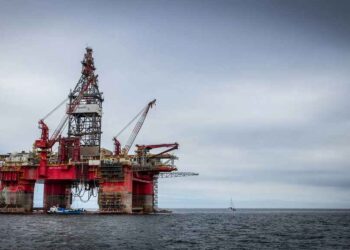South Tunisian Gas Project (STGP) or Nawara project involves the installation of a central processing facility (CPF) at the Nawara well site for pretreatment of gas, a 370km pipeline, and a gas treatment plant (GTP) in the Ghannouch industrial district near the coastal city of Gabès.
The source of gas for the project is the Nawara field, which is located in the Ghademes basin in south Tunis, 50km south-west of Hammouda and Oued Zar oilfields. The production wells of the Nawara field are named Nawara-1, Ahlam-1, Ahlam-2, Sourour, Fella, Ritma, Khouloud, Benefsej-1, and Benefsej Sud-1.
The 50:50 joint venture (JV) of ETAP and OMV Tunisia will operate the South Tunisian Gas Project. Production from the project is expected in 2016.
Nawara field discovery and reserves
The Nawara field was discovered in June 2006 by drilling the Nawara-1 exploration well. The onshore well was drilled to a total depth of 3,970m and flowed at an initial rate of 5,970 barrels of oil per day and 58 million standard cubic feet per day of gas.
Recoverable reserves of the field are estimated to be 1.225 billion cubic meters (bcm) of oil and 10.225bcm of gas.
The new Hasdrubal onshore gas processing facility and the Liquefied Petroleum Gas (LPG) production facility will be located on the Tunisian coast between La Skhira and Sfax in Tunisia and is scheduled for completion in 2009.
Financing for the STGP
The overall investment for the project is estimated to be approximately €1bn ($1.272bn). It is being majorly financed by the European Investment bank (EIB), while The African Development Bank (AfDB) Group is also providing a $75m loan.
Details of the South Tunisian Gas Project
Each of the wells will be connected to the central processing facility by six inch in-field production flowline systems.
The CPF will have a treatment capacity of 2.7 million standard cubic metres per day (mscmd) of gas and 7,000 barrels per day of condensate.
It will be installed in an area covering 2.25ha. Around 300 people will be required to install the facility and ten people will be required to operate the facility when it comes online.
While the gas from the field will be transported through the new pipeline, condensate will be transported through the existing Trapsa oil pipeline. The buried gas pipeline, constructed of steel, with an inner diameter of 24in, will cross the governorates of Tataouine, Kébili, Mednine and Gabes.
“The GTP will be installed on an area covering 35ha.”
The 370km long gas pipeline will have a capacity of 10mscmd. Up to 300 people will be involved during the installation and five people will be required to maintain the pipeline when it becomes operational.
The GTP will have an initial treatment capacity of 2.7mscmd of gas to produce butane, propane, sales gas and condensate, and is expected to start production by October 2016. It will further be expanded in future to enable it to treat 7.3mscmd of gas.
The GTP will be installed on an area covering 35ha. Up to 500 people are expected to be involved during the construction of the facility and 50 people will be required to operate it.
The final products from the project will be supplied to SNDP and STEG. Sales gas, propane and butane will be supplied to these companies through export pipelines of 20in, 6in and 4in in diameter respectively. Condensates will be stored in tanks before they are transported by trucks for sale.
Contractors involved with the STGP
ABB has been contracted to provide the gas treatment plant (GTP) including gas separation and liquefied petroleum gas (LPG) extraction units. It will also carry out the electrification works for the plant.
The company is working in collaboration with Thermo Design Engineering for the $291m contract awarded in September 2014.

















































